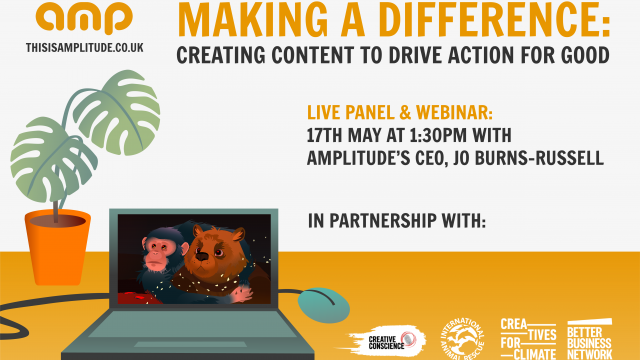Copywriting Tips
Copywriting is an essential part of every marketing toolkit, up there with graphic design, social media, and branding. Copy can entertain, inform, and persuade. It’s a valuable sales tool. Not only that, but people will form opinions of your brand based on the quality and style of your copy. Writing effective copy can be challenging, so we’ve assembled a few copywriting tips to help you get started.
Why are you writing?
Possibly the most important of our copywriting tips: Before you begin writing copy, know why you’re writing it. Every piece of copy on your website, promo literature, or product packaging should serve a purpose. Should your words sell a product or get people to contact you? Is your aim to entertain? Or to build brand trust? Do you want your reader to take an action? Think about your content and overall marketing strategies.
I like to make note of this before I begin writing. If you’re writing short-form copy (website copy, product summary sheet info) you can probably summarise the aim in a sentence or two. If you’re writing longer-form copy (blog posts, case studies), then you might want to expand your summary to include the key points you want to cover as well as the overall goal of the piece.
To give an example, before writing this blog post, I wrote the following summary:
“Aim to empower people to write their own copy. Show that Amplitude copywriters know what they’re talking about, so readers will think of us when they’re in need of copywriting services or advice.”
I then followed this up with a short list of topics to cover. Each item on that list became a subheading in this blog post.
Have a Brand Style and Tone
Something else to consider as you start writing: what style and tone will you write in? Most companies, particularly larger companies with multiple writers, benefit from creating guides for style and tone. This is where you lay out your brand “voice” and any grammatical preferences or peculiarities. Smaller companies with only one or two writers may not feel the need to put all this in writing, but we’d recommend doing so to set you up for the future.
- Do you write more conversationally or matter-of-factly?
- Do you like use metaphors and adjectives frequently?
- Which business-specific nouns do you capitalise?
- How do you use apostrophes where names end with S? Should it be Jess’ or Jess’s?
Note: Many people rely on built-in spelling and grammar checkers or third-party ones like Grammarly to check their work. These are great for catching mistakes, but be aware that they may not approve of your house-style by default. Also, they’re not infallible. Be sure to proofread yourself too.
Say What You Mean
The main goal of writing copy is to get your point across, which is why it’s especially important to proofread not just for spelling and grammar, but to ensure you’ve actually said what you mean. The difference between “10% lower cost” and “10% of the cost” is clear when pointed out, but even obvious things can slip through the net when you’re writing on a deadline.
A few copywriting tips to help you catch mistakes:
- Read your work aloud. You’re more likely to spot mistakes this way.
- Put it to one side for a few hours (if deadlines allow) and come back to it with fresh eyes.
- Get someone else to read through your work. They’ll spot mistakes more easily than you will.
A quick copywriting tip for those writing hashtags: Look at all the different ways your hashtag could be read. Susan Boyle’s album launch party used the hashtag #SusanAlbumParty without thinking about this… I’ll leave you to work out how people read it.
Amazon deliberately used an easily-misread hashtag to promote the new series of The Grand Tour. #AmazonsHitCarShow was widely shared on social media, and perfectly reflects the series’ hosts’ tendency to act first and think later.
Be Concise
I once saw a copywriter use an entire page of text to stress the importance of being concise; they didn’t get hired. When confronted with lots of blank space, it’s tempting to try and fill it. If someone says to write up to 500 words, most people set 500 as the target, not the limit. Beware the waffle. Blank space is not your enemy.
There are two main reasons to avoid waffle:
- You waste the reader’s time
- You look less professional
Both of these damage perception of your brand. People would much rather you get to the point than spend five minutes circling around it. Don’t use 300 words when 100 will do (there are exceptions to this; more on that in a moment). Give them a paragraph of the info they need, not an essay on something they don’t. If you’re left with loads of blank space, talk to your designer to see if the design can be tightened up.
Of course, there are times when you’ll want to use 300 words in place of 100. Brands that use flowery language, metaphors, stories, or conversational language might inflate the word count to get more of their brand identity across. This is perfectly fine to do, but make sure there’s a reason for it, and bear in mind that there’s a limit your reader will be willing to accept.
Copywriting Tips for Reducing Word Counts
As well as reducing word counts to be more concise, it’s inevitable that you’ll occasionally come up against ridiculously small word limits. “Explain every product benefit in 100 words”. Don’t panic! Here are some tips to help you slim your copy.
Firstly, look at every sentence and ask yourself why the reader needs that information. You’d be surprised at how often entire sentences can be removed without impacting meaning. If you’re miles over the word limit, odds are you are putting in far more detail than is expected of you.
If you’re sure every sentence and detail is necessary but you’re still slightly over the word count, look at…
- Every instance of the word “that”. I’d bet that around half of them could be removed (like the one in this sentence).
- Phrases with shorter alternatives. “In order to” can be written as “to”. “In many cases” can be changed to “Often”.
- Adverbs. Words like quickly, suddenly, and quietly can often be removed in favour of stronger verbs. Additionally, some of these words (like “really” and “very”) can sound amateurish.
- “Start”, “begin”, and directional words. It’s the same with “in” and “out”, and many other similar words.
It’s good practice to eliminate these words and phrases even if you aren’t battling against a word count. Including too many of them can make your writing falter rather than flow.
If all else fails, try rewriting your copy starting in a different place. And if even that fails, consider speaking to the person imposing the word count. There might be more flexibility than you think.
Presentation Matters
Finally, once you’re sure everything you’ve said is right, double check that the way you’re presenting your copy makes sense. Long blocks of copy with no pictures makes for hard reading. Likewise, choose fonts that work for your brand and are easy on the eye. Serif fonts are easier to read but can be old-fashioned; sans-serif fonts look more modern and sleek, but are slightly harder to read. Writing more than a short paragraph in all in capitals, italics, or bold, should be avoided, as all of these look unprofessional and a harder to read than standard text.
Thanks for reading our copywriting tips. If you’ve got questions or need some snappy copy, feel free to get in touch.
Got copywriting tips to share? Let us know on Twitter.










